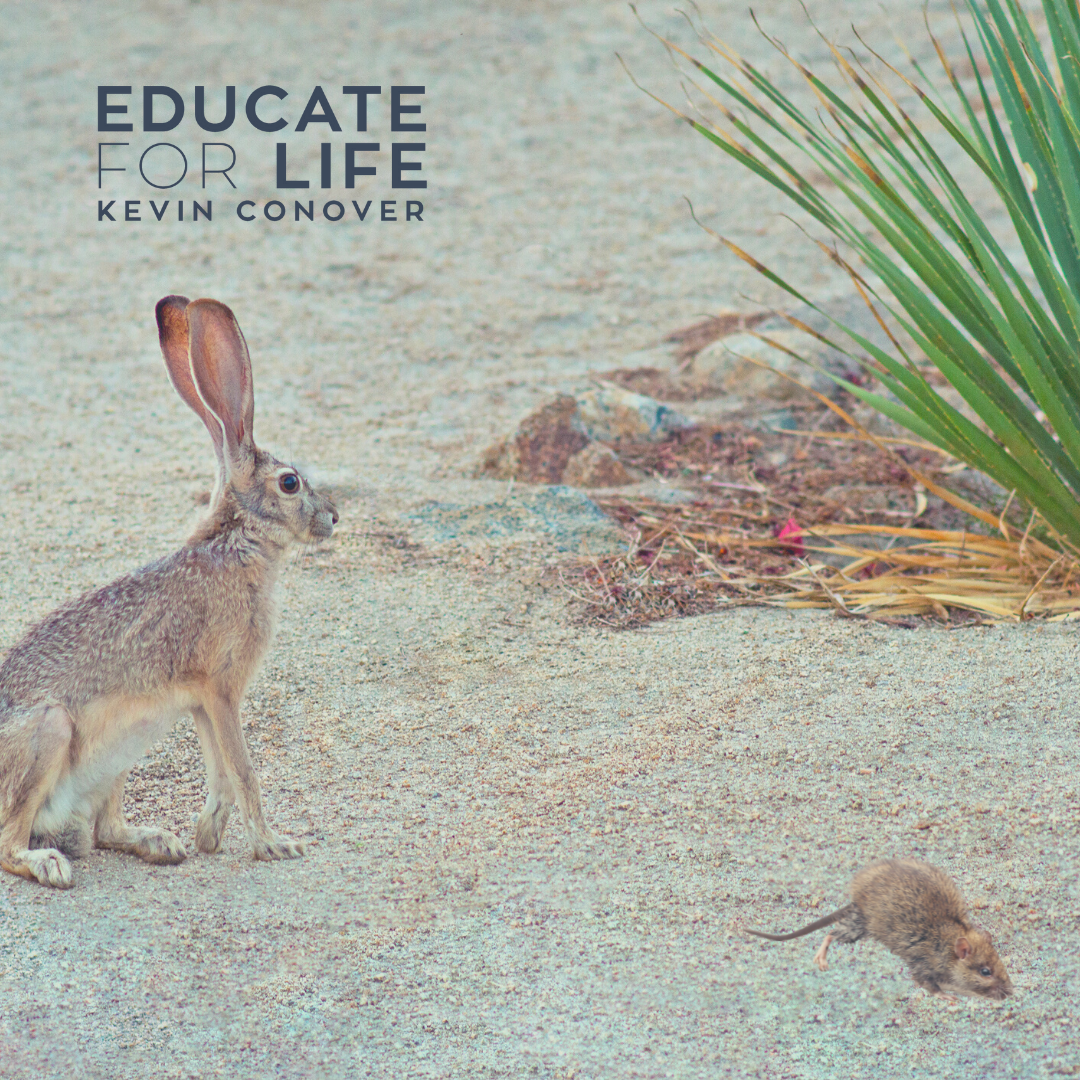The desert is an extremely harsh environment, so how do animals survive?
Let’s consider two desert dwellers, the jackrabbit and the kangaroo rat. The jackrabbit has large, floppy ears. Biologists once thought that large rabbit ears were only used to enhance hearing. However, we now know that their ears perform an even greater function. Scientists investigating heat stressed jackrabbits found that the blood leaving the ear was cooler than the blood entering the ear. They found that when the jackrabbit was too hot, it would expand the blood vessels within its ears, allowing more blood to flow through and thus removing body heat. The large ears act like radiators! During the midday desert heat, a jackrabbit sits in the shade of a bush with its ears erect, radiating heat away from his body and keeping himself cool and comfortable.
The kangaroo rat conserves water because open sources of water do not exist within its desert habitat. As the kangaroo rat digests his food, his very cells capture and reuse the normal waste product of the food breakdown process water. Then he conserves this water by being nocturnal, sweating little, and having extraordinarily efficient kidneys.
These desert creatures are obviously designed to survive and even thrive in such harsh conditions. Do random chance mutations or a powerful Designer seem like the better explanation for these complex survival mechanisms?
(Source: Inspired Evidence – Steven Austin, Grand Canyon, Monument to Catastrophe, 1994 pp. 158-159)









0 Comments
Trackbacks/Pingbacks